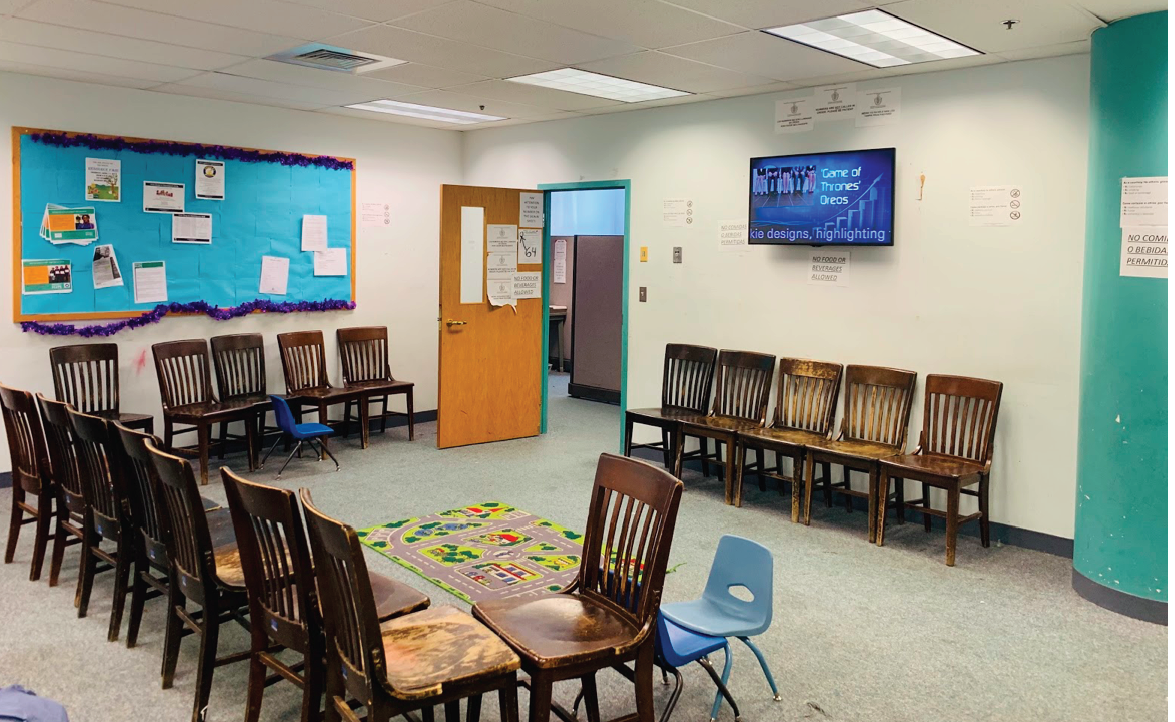wayfinding + waiting Rooms
Improving the Visitor Experience at Boston’s Department of Housing and Community Development (DHCD)
In early 2019, my Research Methodologies class partnered with The Massachusetts Department of Housing and Community Development (DHCD) to improve the application process for families seeking Emergency Assistance shelter. At the end of the semester, we presented our findings and suggestions to DHCD leadership.
Over several months, I conducted phone and in-person interviews, constructed customer journey maps, and worked with classmates to identify opportunities for DHCD to improve the client experience. Eventually, my team focused on improving the wayfinding and waiting room experience at the Boston DHCD office.
The Situation
The DHCD application office at 1010 Massachusetts Ave is difficult to find, hidden within a generic office building, located within the (non-related) office of the Department of Transitional Assistance. While signage exists for DTA, nowhere do those signs mention how to find DHCD.
Applicants often wait for hours in the DHCD waiting room, struggling to control both their anxiety and their children as they wait to speak with a homelessness coordinator to learn if they qualify for shelter.
The current space feels...
Barren
Isolated
Haphazard
Dingy
(Above) Navigating the hallway and poor signage to the DHCD office. (Below) DHCD waiting room, where parents spend hours at a time with their young children
Research
In order to understand the needs of our stakeholders, my team created a persona for a woman and her daughter seeking emergency housing. We called the DHCD housing hotline and (after explaining our role as researchers) talked through the process in an attempt to get placed into emergency family housing. We were unsuccessful, and tracked our experience on the following journey map.
We also interviewed several DHCD workers to understand their constraints and workload. Working with community members who are exhausted and desperately searching for housing can be extremely draining. Added to that, the placement system is idiosyncratic and hard to explain to visitors. Having to reject clients who have been waiting for hours and are obviously in distress adds heaviness to an already difficult job.
Solutions
After interviewing DHCD coordinators, analyzing feedback from applicants, and spending time in the DHCD office space, my group developed an improved system for signage and the waiting room design. Given the heavy nature of homelessness and DHCD’s work, spending time and money on redesigns may seem frivolous. We justified the cost by asserting our belief that thoughtful design is an effective way to show clients that they are valued and respected.
Learnings
Sometimes small, inexpensive changes can make a big difference (ex. waiting room signs)
Secondary research doesn’t compare to the insights you get from interviewing people and spending time in their world.
Figure out how your teammates work and build flexibility into the timeline. Be kind.
When presenting, only highlight the most important things. Make full resources available to viewers afterwards.





